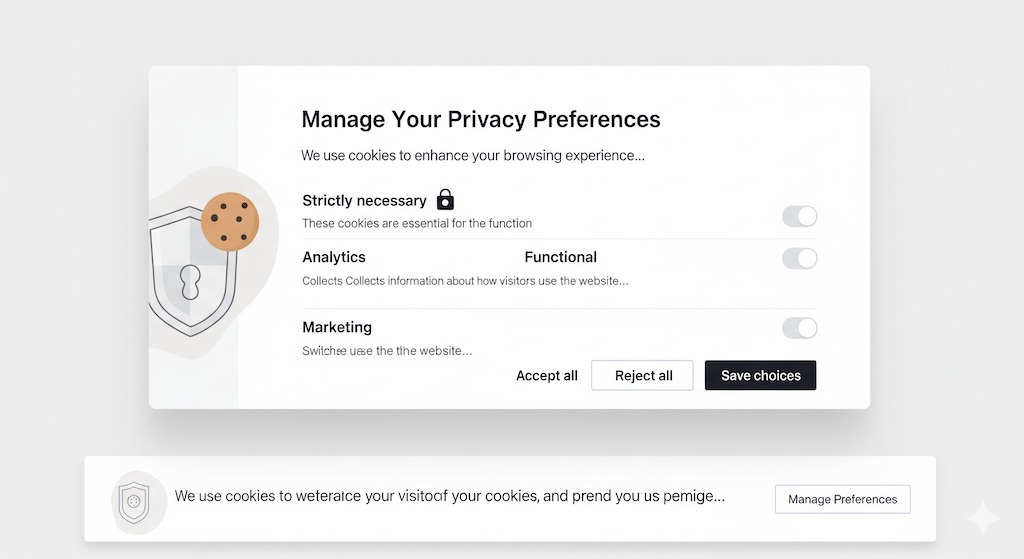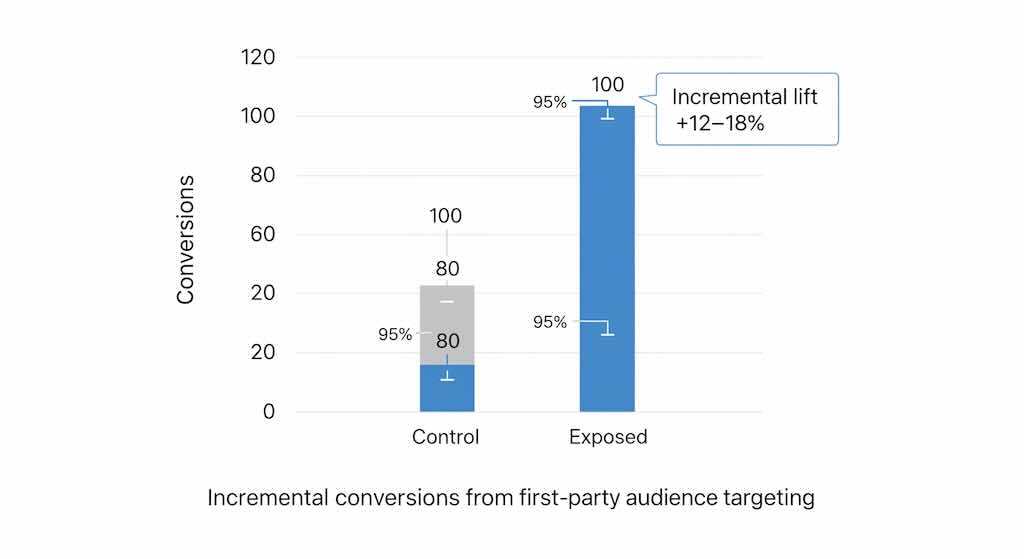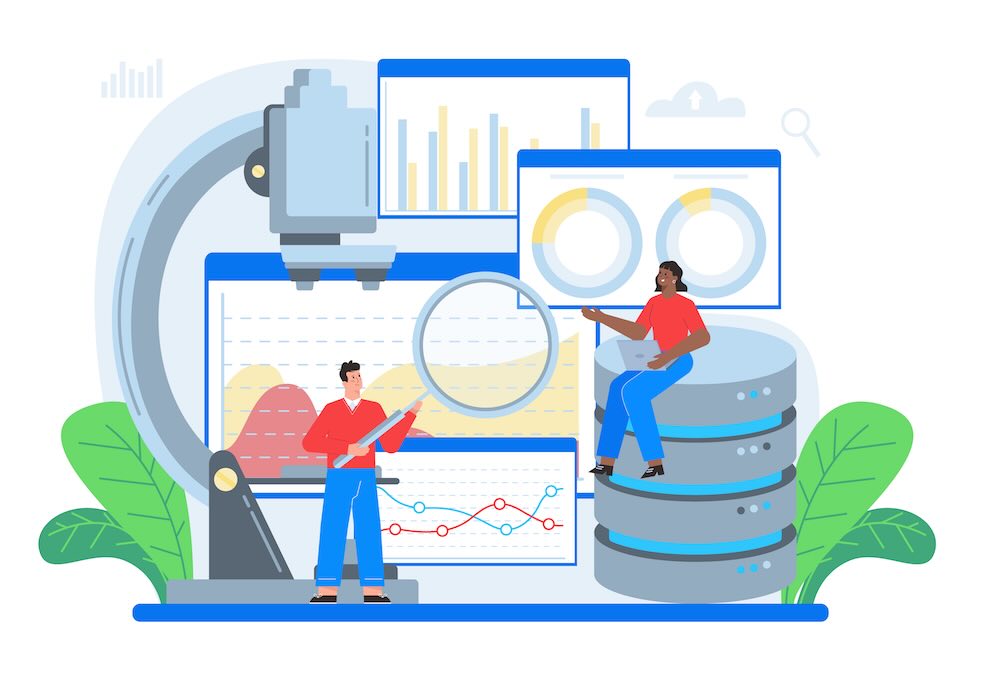When third-party cookies fade, brands with strong first-party foundations don’t just survive—they get sharper signal, faster learning, and cleaner compliance. This guide explains what is first-party data, why it matters, how to collect first party data, and how to turn it into performance with a practical, privacy-first analytics stack.
What is first-party data (and what is 1st party data)?
First-party data (aka 1st party data) is information you collect directly from your audience via your own touchpoints—site, app, emails, in-store systems, and support interactions. Because you gather it yourself, it’s more accurate, more compliant, and more durable than third-party data. Typical categories:
- Behavioral: page views, clicks, searches, carts, app events.
- Transactional: orders, returns, subscription status, value.
- Profile & preference: consent flags, content/product interests, communication choices.
- Contextual: device, location (where permitted), session quality signals.
Why first-party now?
- Signal durability: Works regardless of third-party cookie deprecation and ad-ID limits.
- Relevance: Direct, consented signals map better to real customer intent.
- Trust & compliance: Easier to honor consent, deletion, and purpose limits.
- Efficiency: Improves measurement and audience quality, reducing wasted media.
First party data strategy: the pillars
A solid first party data strategy aligns people, processes, and platforms around four questions:
- What do we need to know? (KPIs, models, decisions to support)
- What can we lawfully collect? (consent, notices, retention)
- How will we activate it? (email, onsite UX, ads, customer service)
- How will we measure lift? (incrementality tests, MMM, cohort ROAS/LTV)
How to collect first party data (ethically)
1) Value-for-data exchanges
Offer something clear in return for data:
- Account creation to save favorites, reorder faster, or access gated content.
- Price alerts, back-in-stock, and replenishment reminders.
- Loyalty programs, early access, or member pricing.
2) Progressive profiling
Ask for the minimum at first touch (email or social login), then gather preferences over time via short prompts and surveys—only as needed for better experiences.

3) Consent & preferences
- Clear, layered notices (purpose + benefit).
- Granular controls: analytics vs. marketing vs. personalization.
- A self-serve preference center that updates all downstream systems.
4) Event instrumentation
Adopt a consistent analytics schema (e.g., view_item, add_to_cart, begin_checkout, purchase, subscribe, cancel_subscription) with required properties (IDs, currency, value, quantities) and optional properties (content category, campaign parameters, coupon, experiment IDs).
5) Server-side collection
Mirror browser events server-to-server (S2S) to reduce client noise, improve data quality, and better enforce consent. A server gateway can also standardize transformations and add authenticated user IDs.
Architecture: analytics without third-party cookies
Think “warehouse-first,” with privacy controls at the center.
- Client & server collectors
- Web/app SDK + server events honoring consent.
- Event validation (schema, IDs, PII stripping).
- Tag management
- Client tag manager for UX-critical tags.
- Server-side tagging to forward events to analytics/ads endpoints with fewer cookies and tighter governance.
- Identity & stitching
- Anonymous device/session IDs pre-login.
- First-party customer ID post-login/subscription.
- Deterministic joins (login, hashed email) and cautious use of probabilistic signals where lawful.
- Data warehouse / lakehouse
- Central store for raw events, orders, and marketing costs.
- Feature tables for LTV, churn, RFM, propensity, eligibility.
- Activation layer
- First party data marketing via email, push, onsite personalization, and cleanly shared modeled audiences with ad platforms (using privacy-safe matching).
- Real-time segments for cart abandoners, high-value cohorts, or churn-risk users.
- Measurement
- Experimentation (A/B and geo-lift).
- MMM for long-horizon, channel-mix decisions.
- Cohort views: ROAS/LTV by signup month, campaign, and treatment.
Governance & privacy by design
- Data minimization: Collect only what powers a user benefit or KPI.
- Purpose specification: Tag each field with its allowed use (analytics, service, marketing).
- Retention: Auto-expire fields by purpose; keep summary metrics longer than row-level identifiers.
- Subject rights: Deletion, export, and preference changes propagate to all sinks.
- PII handling: Hash or tokenize before activation; never ship raw PII to third parties.
From insight to impact: how to use first party data
Personalization & UX
- Rank content/products by a user’s recency and category affinity.
- Adapt onboarding flows to segment (e.g., beginner vs. power user).
- Predict replenishment windows for reminders.
First party data targeting (paid media)
- Build seed audiences from high-LTV cohorts and look-alike expansion where allowed.
- Suppress recent purchasers or customer-service escalations to avoid wasted spend.
- Bid more for predicted high-value users; cap frequency for low-propensity segments.
Lifecycle marketing
- Triggered journeys: welcome, nurture, abandoned browse/cart, win-back.
- Preference-driven content (price sensitivity, style, or topic interests).
- LTV-aware offers and loyalty tiers.
Metrics that matter in a cookieless world
- Consent rate & preference completion (top-funnel data health).
- Identifier coverage (share of events with stable first-party IDs).
- Attribution quality (share of conversions inside experiments or matched to first-party IDs).
- Lift & incrementality (geo-tests, holdouts).
- Cohort LTV / payback (by channel, audience, and creative).
- Churn & reactivation rate (subscription/products with repeat cycles).
- Data freshness & schema conformance (operational reliability).
Playbook: 90 days to first-party readiness
Days 1–30: Foundation
- Define KPIs and use-cases; write your first party data strategy one-pager.
- Ship consent banner + preference center.
- Draft the event schema and tag the top 10 events.
Days 31–60: Quality & identity
- Turn on server-side collection; validate schema at intake.
- Introduce authenticated IDs on login and order confirmation.
- Stand up core warehouse tables and daily tests.
Days 61–90: Activation & measurement
- Launch 2–3 first party data marketing programs (welcome, cart rescue, win-back).
- Create high-LTV seed audiences; start suppression lists.
- Run at least one geo-lift or A/B test to prove incrementality.

Common pitfalls (and fixes)
- Collecting everything “just in case.”
Fix: Tie every field to a purpose and retention; drop the rest. - Over-reliance on last-click.
Fix: Mix experiments, MMM, and cohort LTV to see the full picture. - PII leakage in tags.
Fix: Hash at the edge; audit payloads; restrict who can ship tags. - One-and-done consent.
Fix: Refresh consent on material changes; make preferences accessible.
FAQs
Is first-party possible without logins?
Yes. You can still collect consented behavioral and contextual events tied to a first-party session/device ID. Logins improve durability and joining with orders—aim to encourage account creation with real value.
How to use first party data across ad platforms without third-party cookies?
Share hashed, consented identifiers through official conversions/audiences APIs, or use clean-room style integrations. Always honor user choices and regional rules.
What tools do I need?
Any combo that covers event collection (client + server), tag orchestration, a warehouse/lake, an activation layer (ESP/marketing automation), and testing/measurement. Choose based on scale, budget, and privacy features.



